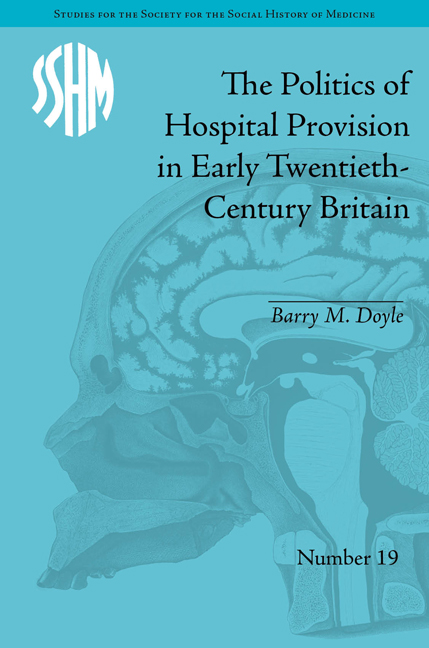Book contents
- Frontmatter
- CONTENTS
- Dedication
- Acknowledgements
- List of Tables
- Introduction
- 1 Leeds and Sheffield: Economic, Social and Political Change
- 2 Hospital Provision: Voluntary and Municipal
- 3 Patients and Access
- 4 Specialization and the Challenges of Modern Medicine
- 5 Finance
- 6 The Politics of Hospital Provision
- 7 Co-operation, Competition and the Development of Hospital Systems
- Conclusion
- Notes
- Works Cited
- Index
5 - Finance
- Frontmatter
- CONTENTS
- Dedication
- Acknowledgements
- List of Tables
- Introduction
- 1 Leeds and Sheffield: Economic, Social and Political Change
- 2 Hospital Provision: Voluntary and Municipal
- 3 Patients and Access
- 4 Specialization and the Challenges of Modern Medicine
- 5 Finance
- 6 The Politics of Hospital Provision
- 7 Co-operation, Competition and the Development of Hospital Systems
- Conclusion
- Notes
- Works Cited
- Index
Summary
In the period between the end of the First World War and the inauguration of the NHS the demands on hospitals grew significantly: inpatient and outpatient numbers soared necessitating increased accommodation; new drugs and technologies were developed; and more, better trained and better remunerated staff were required. To meet these financial commitments voluntary hospitals had to diversify the source and increase the volume of their income at a time when social and economic changes were weakening traditional philanthropic giving. Provincial voluntary hospital income – after an initial crisis between 1918 and 1923 – did largely keep pace with expenditure, increasing by about 65 per cent between 1920 and 1938. Moreover, most historians accept that they were not on the verge of collapse by the later 1930s as argued by Titmuss, with many adapting to the increased demand for services. Certainly the inability of traditional voluntary sources of finance – subscriptions, donations, collections – to meet growing demand meant payment, either direct or indirect, was vital to the survival of the voluntary system but how this was achieved and its long-term impact remain the subjects of considerable debate. It has been argued that while mass worker prepayment schemes were essential to the economic viability and vitality of these institutions, this was at the expense of any philanthropic claims they may have made. Others see workers contributions as retaining implicit and explicit voluntary elements bolstered by the hospitals' insistence that prepayment did not ensure treatment.
- Type
- Chapter
- Information
- Publisher: Pickering & ChattoFirst published in: 2014



